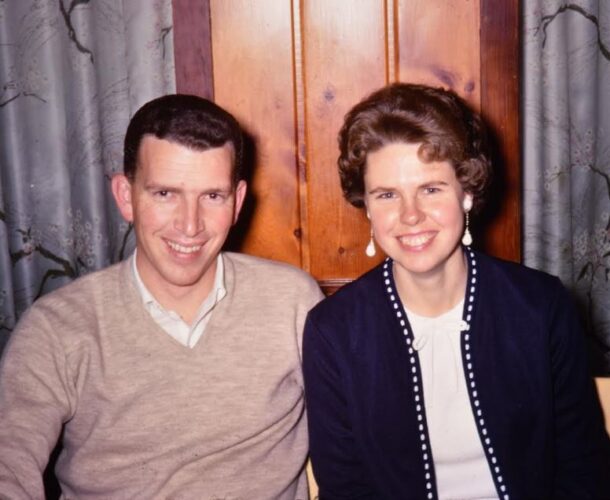If you’re searching for the latest or historical Ogden Standard Obituaries, you’ve come to the right place. Whether you’re looking to honor a loved one, conduct genealogical research, or simply stay connected with your Ogden, Utah community, this comprehensive guide explains everything you need to know.
From how to navigate obituary listings to finding archived notices and understanding what details they contain, this article serves as a complete resource for exploring Ogden Standard Obituaries in depth.
1. What Are the Ogden Standard Obituaries?
The term Ogden Standard Obituaries refers to obituary listings published by the Standard-Examiner — a prominent daily newspaper based in Ogden, Utah. This publication has served the community for decades, originally known as The Ogden Standard before evolving into its current form.
Obituaries in this newspaper document recent deaths, memorials, and funeral details, providing an official and trusted source of remembrance for the community.
Beyond current notices, Ogden Standard Obituaries also refers to the newspaper’s historical archives. These archives contain decades of records preserved on microfilm and in digital databases. They serve as a valuable source for genealogists, historians, and families tracing their heritage through Weber County and northern Utah.
2. Where to Find Current Listings
2.1 Official Newspaper Website
The Standard-Examiner maintains an updated obituary section where families and funeral homes publish current death notices. Each listing typically includes the deceased’s name, age, date of death, and service arrangements.
This is the most reliable place to find Ogden Standard Obituaries from recent weeks or months.
2.2 Digital Databases and Aggregators
In addition to the newspaper’s website, several online archives and databases preserve older obituary listings. Many of these sources collect and digitize content from newspapers across the country, including Ogden publications.
Some examples include obituary aggregators, genealogy research platforms, and memorial websites that host both current and historical notices.
2.3 Library and Microfilm Access
Local libraries in Utah, particularly the Weber County Library and the Utah State Archives, maintain microfilm copies of the Standard-Examiner. These archives may include Ogden Standard Obituaries dating back several decades.
Access to these archives is typically free to the public or available through a small membership fee.
3. Using Ogden Standard Obituaries for Genealogy & Research
3.1 Why They Matter
For genealogists and family historians, Ogden Standard Obituaries are more than memorial notices — they’re key historical records. Obituaries often reveal valuable information, such as:
- Full name of the deceased
- Dates of birth and death
- Names of relatives and survivors
- Place of burial
- Community or church affiliations
- Occupation, education, or military service
Such details can bridge generational gaps and verify information across other sources like census records, gravestone inscriptions, and birth certificates.
3.2 How to Search Older Records
If you’re researching someone who passed away before the digital era, use the following steps:
- Identify an approximate year or decade of death.
- Visit your local library or genealogy center to access microfilm copies of the Standard-Examiner.
- Browse the obituary section for the relevant dates.
- Record the publication date and page number for citation purposes.
For more recent obituaries, the digital archives of the Standard-Examiner or genealogical websites are often the easiest starting point.
3.3 Combining Multiple Sources
To build a more complete family history, combine obituary information with other records such as:
- Cemetery and burial databases
- Marriage and birth certificates
- Historical census data
- Military service records
Each source contributes to a more accurate picture of your family’s story.
4. Understanding What Information Is Included
When exploring Ogden Standard Obituaries, it helps to know what to expect in a typical listing.
4.1 Common Details in Obituaries
Most obituaries include:
- Full name and age
- Date and place of death
- Funeral home or mortuary handling services
- Date and time of funeral or memorial service
- Surviving relatives (spouse, children, siblings)
- Short biography or career highlights
- Notes about community involvement or hobbies
4.2 What Might Be Missing
Older obituaries may not include all these details. Some may list only a name and date of death, especially in earlier decades. Privacy laws or cultural practices might also limit what information families share publicly.
4.3 Why It Matters
Recognizing these patterns helps researchers and family members understand what clues to extract and what gaps might need filling from other sources.
5. Tips & Best Practices for Searching
Finding the right Ogden Standard Obituaries can be time-consuming, but these practical tips will make your search more efficient.
5.1 Use Specific Search Phrases
When using digital archives, include both the full name and “Standard-Examiner” in your search. Try variations in spelling and include middle initials if known.
5.2 Filter by Date and Location
If your search returns too many results, narrow it by including the city (“Ogden”) and approximate year of death.
5.3 Check Funeral Home Listings
If an obituary doesn’t appear in the Standard-Examiner, it may still be found on the website of the funeral home that managed the service. Many local mortuaries publish digital obituaries on their websites.
5.4 Verify Information
When using obituaries for research or publication, always cross-reference data with official records. This ensures historical accuracy and prevents duplication errors in family trees.
5.5 Respect Privacy and Copyright
While obituaries are public notices, always respect the wishes of surviving family members when sharing or reproducing them. Avoid copying full text unless it’s public domain or properly credited.
6. Common Challenges and Solutions
Challenge 1: Missing or Incomplete Obituaries
If an obituary doesn’t appear online, it might not have been digitized yet. Solution: check microfilm archives or contact local libraries for assistance.
Challenge 2: Paywalls or Restricted Access
Some archives require subscriptions. Solution: use library memberships, many of which provide free access to newspaper archives.
Challenge 3: Duplicate Names
For common names, use extra details such as birth year, spouse name, or funeral home to confirm identity.
Challenge 4: Inconsistent Spellings
Names can appear differently in historical records. Try alternate spellings, initials, or nicknames when searching Ogden Standard Obituaries.
FAQ
Q1: How often are Ogden Standard Obituaries updated?
They are updated daily on the Standard-Examiner website and weekly in print editions.
Q2: Can I access older obituaries online?
Yes, but full archives may only be available through libraries, genealogy websites, or subscription-based newspaper databases.
Q3: Are Ogden Standard Obituaries free to read?
Recent notices are usually free to view. Archived materials may require paid access or library membership.
Q4: Can I submit an obituary to the Standard-Examiner?
Yes. Families and funeral homes can submit obituaries directly through the newspaper’s obituary submission service or by contacting its office.
Q5: What if I only know the mortuary name, not the newspaper?
Start with the mortuary’s website. Most funeral homes list obituaries online, which you can then cross-check in the newspaper archives.
Conclusion & Next Steps
Exploring Ogden Standard Obituaries is more than a search for names and dates — it’s a journey through personal and community history. From recent death announcements to century-old notices, each record tells a story of life, family, and legacy in the Ogden region.







Leave a Reply